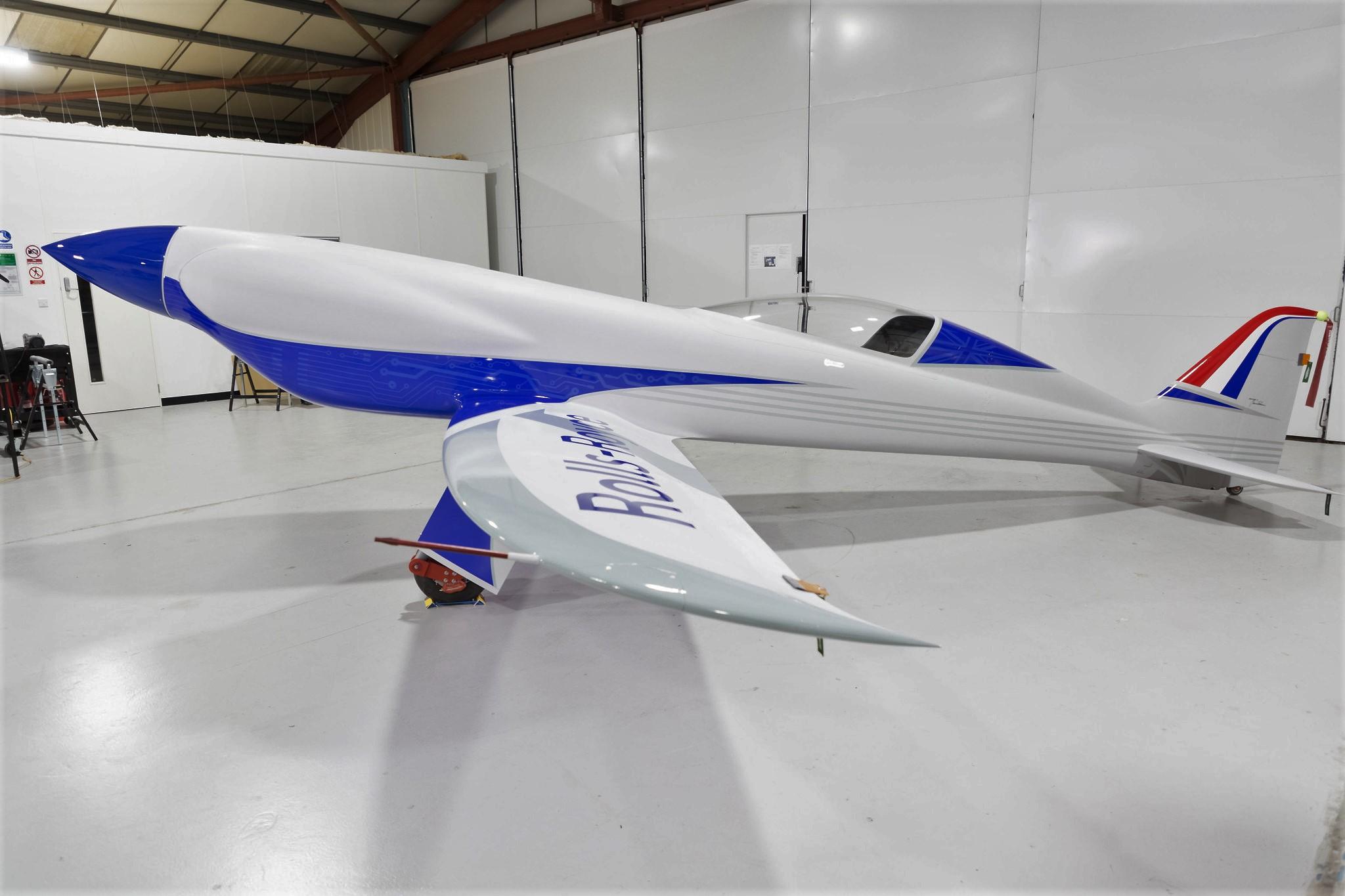
Rolls-Royce has released the first images of an all-electric demonstrator aircraft the company is developing to fast-track expertise in electric propulsion and stimulate a UK-based supply chain in this growing sector.
Developed in partnership with electric motor and controller manufacturer YASA and startup Electroflight, the ACCEL (Accelerating the Electrification of Flight) is due to make its first flight in the second quarter of 2020. It is aimed at establishing a new speed record for an all-electric powered aircraft by targeting an airspeed of 300 mph (260 kt.) or more.
The tail-sitter aircraft, which is based on a heavily modified version of the diesel-powered Nemesis NXT Big Frog sport racing aircraft, currently is being fitted with the propulsion system. Ground tests of the integrated aircraft and propulsion system already are underway using a test airframe dubbed the “ion bird.” Rolls says “planned tests over the next couple of months include running the propulsion system up to full power as well as key airworthiness checks.”
Supported in part by the UK government Aerospace Technology Institute (ATI), in partnership with the Department for Business, Energy and Industrial Strategy and Innovate UK, the ACCEL project is based at Electroflight’s Gloucestershire Airport facility in Staverton. Targeted specifically at developing know-how in energy storage and higher power density electrical systems, ACCEL is how Rolls is learning about the integration, packaging and management of lithium-ion batteries as well as gaining a better understanding of the thermal analysis of center cells.
With more than 6,000 cells mounted in the extended nose section to power the propulsion system, ACCEL will have “the most power-dense battery pack ever assembled for an aircraft, providing enough energy to fuel 250 homes or fly 200 mi. on a single charge,” Rolls says. Battery pack temperatures will be regulated using an active thermal management system configured with coolant pumps and a radiator mounted beneath the nose. At max power the system will deliver 750 kW and drive three YASA 750R motors. These will deliver more than 500 hp to the three-bladed propeller, which will spin at a relatively slower rate of 2,400 rpm.
The ACCEL project complements other, smaller-scale electric and hybrid-electric initiatives at Rolls aimed at the personal air vehicle and fledgling urban air mobility markets. For the latter, Rolls-Royce’s Indianapolis group is ground testing a hybrid electric system based on the company’s Model 250 (M250) turboshaft under a program that began in early 2018.






Comments
Where are the losses coming from? When I've read about other power drive/motor systems the efficiency is 85+% with Tesla doing 94%-96% depending on the driving motor.
In addition, the aircraft in the picture looks more like a tail dragger than a tail sitter, unless I am mistaken
Someone in the U.K still knows how to put a good set of lines to paper.....